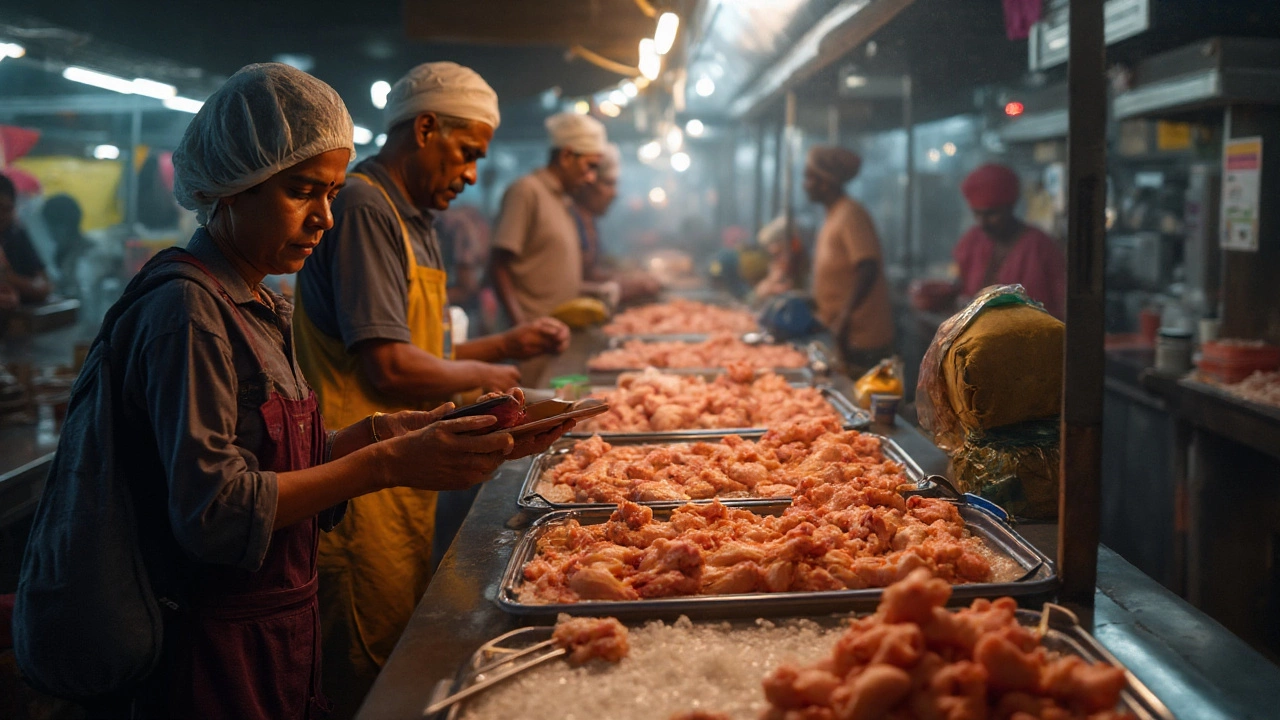
Can You Eat Chicken in India? Laws, Culture, Halal/Jhatka, Safety, and Best Dishes
Yes-chicken is widely eaten across India. Here’s how to do it right: laws, culture, halal vs jhatka, safety tips, pricing, festivals, and the best regional dishes.
When you eat chicken in India, you’re not just having a meal—you’re stepping into a complex web of religion, region, and identity. In some places, it’s a daily staple. In others, it’s avoided out of respect, tradition, or belief. This isn’t about health or taste—it’s about what people have lived by for generations. The idea that all Indians avoid meat is a myth. Many do, but millions more eat chicken regularly, especially in Tamil Nadu, Kerala, and the Northeast. What changes is not the bird, but the context around it.
Tamil food culture, a vibrant system of rituals, meals, and community eating habits centered in Tamil Nadu and among Tamil speakers worldwide treats chicken differently than, say, North Indian Hindu households. In rural Tamil villages, chicken curry is common during festivals like Pongal or after temple visits. But in a Brahmin household in Varanasi, even chicken might be off-limits due to strict vegetarian norms tied to caste and spiritual purity. Then there’s the religious dietary restrictions India, the set of food rules shaped by Hinduism, Islam, Christianity, and local beliefs that guide what people eat or avoid across the country. Muslims in Kerala eat chicken daily, often with spicy gravies and rice. Christians in Goa serve it with vinegar and garlic. But in parts of Gujarat or Rajasthan, even chicken is seen as too ‘heating’ or impure for daily meals. It’s not about cruelty or cleanliness—it’s about inherited belief systems passed down through meals, not sermons.
Even within Tamil Nadu, there’s variation. In urban Chennai, chicken is grilled, fried, or baked in modern homes. In villages, it’s slow-cooked with curry leaves and coconut, often served with rice and millet. But in some temple towns, even chicken is avoided during certain rituals. Why? Because the body is seen as a vessel for devotion, and certain foods are believed to disturb spiritual balance. This isn’t about judgment—it’s about belonging. If you’re visiting India and wondering whether you can eat chicken, the answer is simple: look around. Ask. Observe. In most homes, if it’s offered, it’s safe to accept. But in temples, ashrams, or conservative homes, silence speaks louder than words. The Indian food taboos, the unspoken rules that tell people what not to eat based on religion, caste, or community are subtle but powerful. They don’t always appear on menus. They live in glances, pauses, and polite refusals.
What you’ll find below are real stories and clear explanations about how chicken fits—or doesn’t—into daily life across India. You’ll learn why some communities eat it without hesitation, while others never touch it. You’ll see how migration, religion, and modernization are changing old habits. And you’ll understand that in India, food isn’t just fuel—it’s a language. One that changes by the town, the temple, and the family you sit with.

Yes-chicken is widely eaten across India. Here’s how to do it right: laws, culture, halal vs jhatka, safety tips, pricing, festivals, and the best regional dishes.